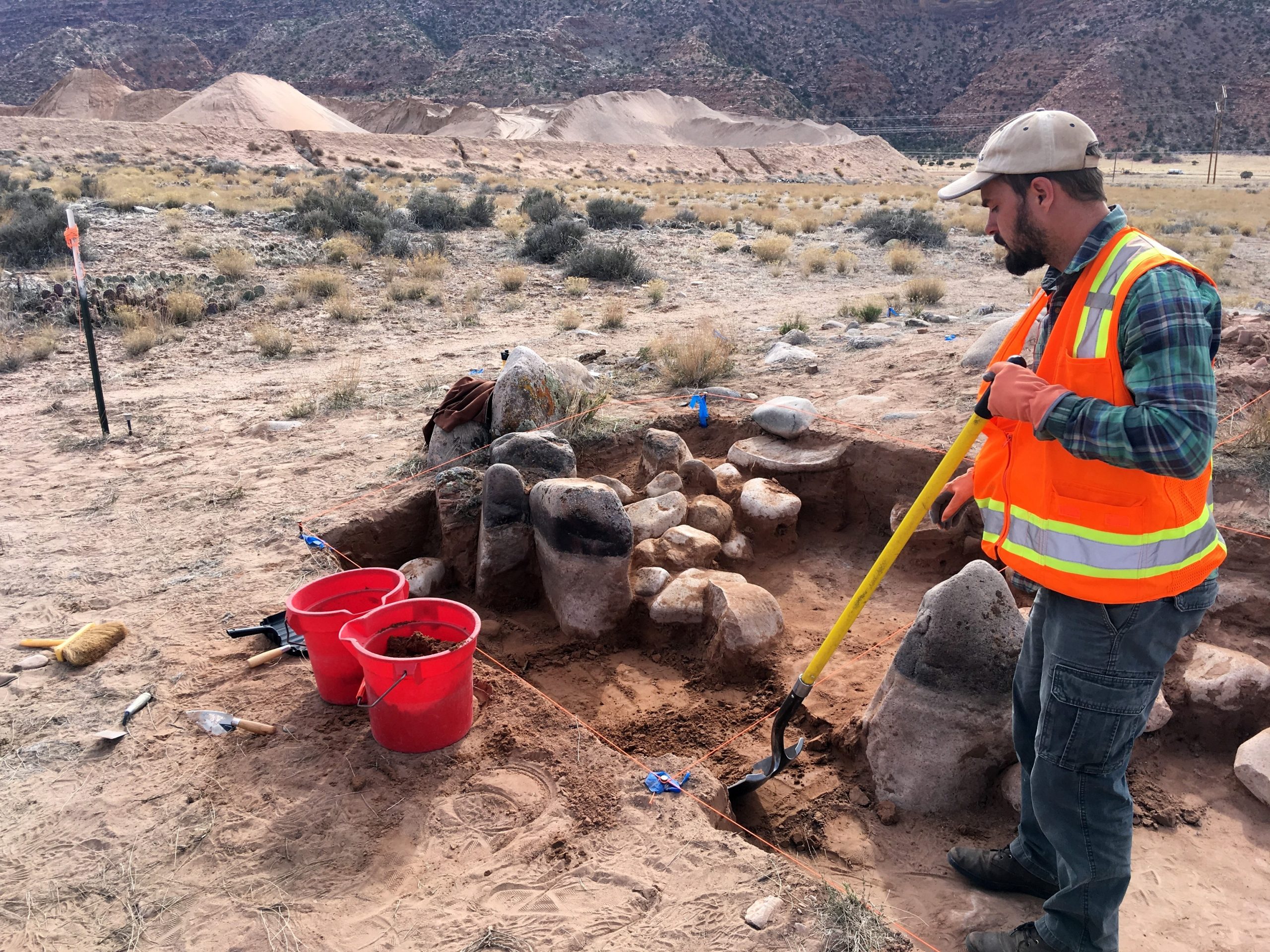Some information may be outdated.
If you dig archaeology, come spend an evening with principal investigator Dr. Jody Patterson and project director Patricia Stavish as they share their initial observations and findings from an excavation site in Spanish Valley.
Relics of past civilizations are hidden in rocks in southeast Utah. When unearthed, their artifacts tell stories of the peoples who came before us. “Huh, Didn’t Expect That,” is a lecture on Thursday, May 17, that will tell the story of ancient people who once lived in the area. Sponsored by the Canyonlands Natural History Association and the Museum of Moab, the lecture focuses on ancient history found in arid desert sands.
But unlike the desert, don’t expect the content to be dry. Sharon Kienzle, Moab Information Center manager, said Patterson has been giving lectures for the Canyonlands Natural History Association for eight years.
“He is captivating. He makes archaeology interesting and fun,” Kienzle said.
Patterson said the lecture will focus on the initial results of the excavation.
“We will be exploring the potential cultural affiliation of the site’s inhabitants by examining the similarities and differences between similar sites in the Pueblo and Fremont cultural areas,” he said.
Patterson and Stavish’s team used a variety of methods during excavation. The team dug shovel probes – round, 3-foot-deep holes, to determine if it would be worth it to bring in a backhoe to dig further.
“The excavation of the backhoe trench did confirm the presence of an activity area, but also surprised us with the presence of a buried pit house (a semi-subterranean habitation structure),” Stavish said.
The team looked for variations in sediment color to uncover archaeological “gold mines” containing copious amounts of priceless relics.
“These darkened sediments, referred to as cultural fill, often contain higher densities of artifacts and are darker in color as they contain more organic materials such as food remains and charcoal and ash from cooking fires,” Stavish said.
Patterson was surprised at the diversity of artifacts the team found.
“This was an amazing site (that) kept surprising us with every new unit that we opened,” Patterson said.
The excavation, which he thought would take a few days to finish, spanned two months and unearthed a thousands of pieces of artifacts hidden under the desert strata.
“Most other excavated sites around Moab consist of earlier pit structures that predate the introduction of pottery. The structures excavated at the site include a small four-room masonry structure and large pit structures,” he said.
The dig uncovered ancient pieces from various artifact classes. The team recovered ceramics, chipped stone tools such as projectile points, drills, scrapers, ground stone tools, bone tools and ornamental objects, such as stone and bone beads.
“We also recovered various unworked animal bones, charred corn, beans, Pinyon nuts, and dozens of sediment samples,” Patterson said.
The artifacts have been dated to the Formative Period between A.D. 900 to 1200.
“During the late Formative Period, Southeastern Utah likely had a population several times larger than its modern population,” Patterson explained.
A severe drought, among other factors, caused a mass emigration to areas in New Mexico and Arizona on the Rio Grande and Little Colorado Rivers.
“The more we study the archaeological record, the more we learn about what it takes to live in the area, and what environmental and social thresholds exist to be able to live in an arid landscape. These thresholds affect how modern people can cope with ecological stress and social conflict in the same area,” Patterson said.
As Moab heads into a dry summer, messages of the past seem eerily prophetic.
“By better understanding the past, we can establish a more sustainable presence in the region today,” Patterson said.
Archaeologists surprised by ancient desert excavation
When: Thursday, May 17, at 6 p.m.
Where: Moab Information Center, 25 E. Center St.
Cost: Free
cnha.org/news-blogs-and-lectures/cat/mic-lectures/post/jody-patterson-2018/
“This was an amazing site which kept surprising us with every new unit that we opened.”
Appreciate the coverage? Help keep local news alive.
Chip in to support the Moab Sun News.





